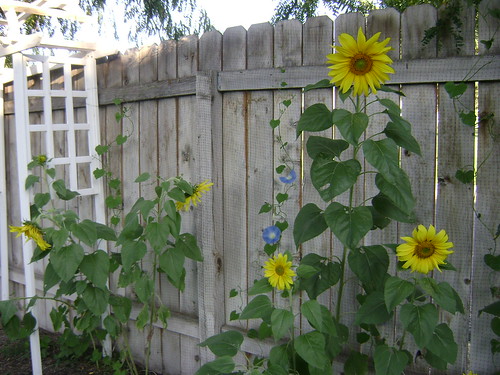
It all started with the question “Why?”
Why are squashes planted in hills or mounds? It’s not like I wanted to buck tradition, but it is extra work to create such mounds or hills. Two days later, I have a lot of conjecture but no real answer. The books all treat the planting in mounds as a de facto practice that need no explanation. Apparently it has been the custom for more than 100 years...
- “For general field conditions, the seeds of Squashes are usually planted in hills where the plants are to stand. If the land is mellow and rich, these hills are nothing more than a bit of ground 12-18 inches across, which has been freshly hoed or spaded and leveled off. “ (Bailey, 1910, p. 1712)
- “All squash and pumpkins are frost-tender, and grow best during the heat of summer in soils that are warm and have a high water-holding capacity. … Planting distances vary widely, but the bush types are usually planted in hills…” (Wyman, p. 1064)
My friends had ideas for why we plant in hills.
1. Growth Space or Area
2. Warmth
3. Drainage
After hours of reading books and searching the Internet I finally found the wisdom of an individual gardener who states:
----------------------------------------------------------
Posted by macmex 6b (My Page) on
Mon, Mar 31, 08 at 12:01
Waterlily, where do you live and garden? A lot depends on one's climate. For instance, Sueloring is in zone 4 and finds that it really helps to mound up soil and plant on the mounds. I assume her climate is pretty cool, with a shorter growing season. I, however, live in Oklahoma with a long hot growing season. I sometimes grow my squash and pumpkins in "hills" meaning I simply group two to three seeds to one spot. But I don't make a mound. In fact, I often plant in a depression, so I can more easily water during the hot season. In the strictest sense "hill," in squash and pumpkin planting terminology really only means a group planting. The other option is to plant in a row. When I want a lot more of a given squash I will pour a line of good compost where I want my row and turn it under with a fork. Then I plant my squash in that row of enriched soil, perhaps a foot a part.
Another matter of terminology is that of the names "squash" and "pumpkin." Most people think of pumpkins as being round and orange, or at least round; and squash being most anything else. Strictly speaking any pumpkin is also a squash. So, if someone mentions "growing squash," you can know that what follows will also apply to your pumpkins.
Happy gardening!
George
Tahlequah, OK
http://forums.gardenweb.com/forums/load/gourds/msg0314405422835.html----------------------------------------------------------
Well this year I planted in my pumpkins in small mounds and my zucchini in a raised ridge. I think I’ll try the gourds and cucumbers on a flat surface. Though I may train those vines up and over a trellis… Check back with me later to see how things have worked out.
--- Jenny
Bailey, L.H. (1910). Squash. In The Cyclopedia of American Horticulture (Vol. 4, pp 1711-1713). New York: Macmillan.
Wyman, D. (1986). Squash and Pumpkins. In Wyman’s Gardening Encyclopedia (pp. 1063-1065). New York: Macmillan

